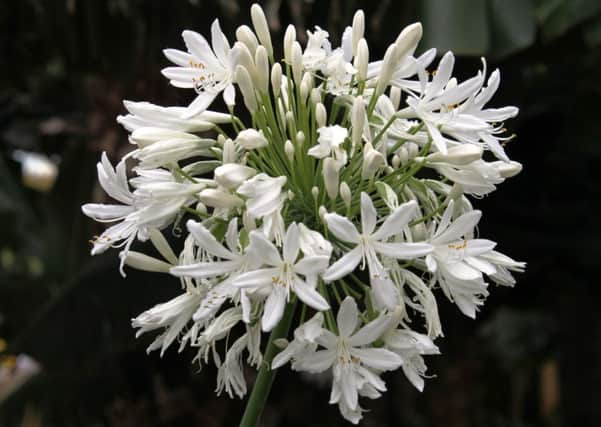A timely warning


But it was a warning for the gardener to be prepared to protect the vulnerable before things gets worse and winter really bites.
For some, it is relatively easy to keep at-risk plants if not happy at least alive – use your own homemade compost to protect the roots of those plants that are only borderline hardy (plants like agapanthus, bottle brush plant (Callistemen), pittosporum and cordyline, which stand a much better chance of survival if they are given some extra TLC).
Advertisement
Hide AdAdvertisement
Hide AdJust place a decent layer of compost over the root area of these plants to provide a bit of much-needed insulation, and tie up the strap-like leaves of the cordyline with twine to reduce the amount of rainwater that gathers where leaves join the stem, a spot which, potentially, could become a frost trap. If the plant is in a pot small enough to accommodate in an unheated greenhouse or even a conservatory, it may pay to bring it indoors.
With really tender shrubs just too big or too delicate to move, it may pay to construct a cage around them. Make it from chicken wire and pack it with dry material.
Top off the cage with a waterproof piece of plastic to keep off most of the winter rain.
Yes, the result may not look very pretty but it could be the difference between life and death for a treasured plant.
Advertisement
Hide AdAdvertisement
Hide AdSome plants will survive with just the occasional act of kindness – if the weather forecast is for frost, wrap them overnight in newspaper or horticultural fleece.
When – and if – things warm up the following morning, uncover them until the next frost warning.
Container-grown plants are always vulnerable during winter, but the simple act of placing them in a sheltered, warm spot by a south-facing wall is often sufficient to see many through to next spring.
As an added precaution, lift the pots off the ground (you can buy small terracotta feet or just use small stones) to encourage better drainage and thus prevent sodden compost from freezing around the rootball.
And should it snow, be prepared to get out the long brush and clear any weighty downfalls from vulnerable foliage.